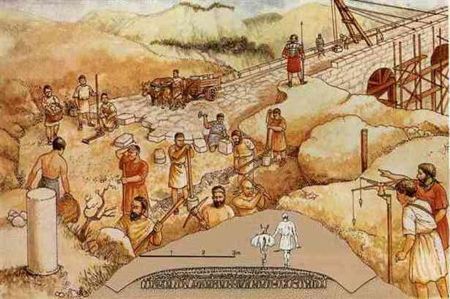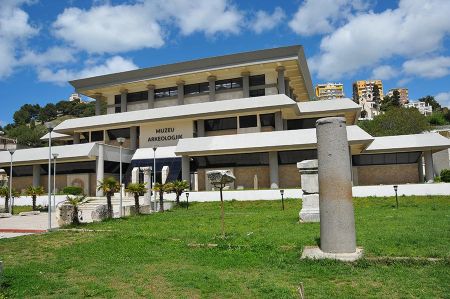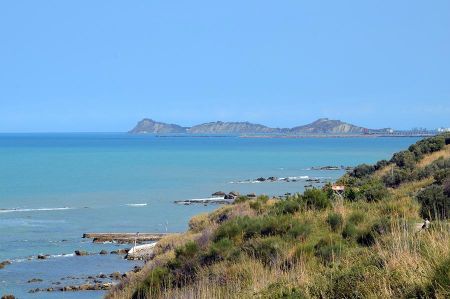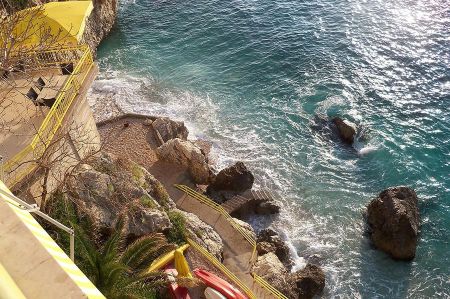Durrës - Democratization is inviting tourists as well
- Written by Portal Editor
Durrës was little to hardly developed in the field of tourism during the communist regime of Envar Hoxa, despite its proximity to the capital Tirana, which is only 30 kilometres away.
At that time, you could count the hotels on one hand, there were no camping sites or even parking spaces. The number of foreign tourists was extremely low because the borders were closed. When the democratic change came in the 1990s, the tourism boom began. Hotels, apartment buildings and vacation homes sprang up like mushrooms.
Durrës - start of the Via Egnatia trade route
 The city has an ancient history, because the city, founded as a colony by Dorian colonists from Corinth and Corfu in the 7th century BC, played a strategically important role for the Romans, but also later for the Byzantines. The city became one of the starting points of the Via Egnatia, which connected the Adriatic Sea with Byzantium. Another starting point was Apollonia, 65 kilometres to the south, which was still on the sea at the time. The Via Appia, which connected Rome with the southeast of the Apennine Peninsula and found a kind of continuation in the Via Egnatia, ended in Brindisi, 150 kilometres away on the opposite side of the Adriatic. According to the Roman poet Catullus, the city of Durrachium Hadriae tabernam - "the Taberna of the Adriatic" - was one of the resting places for Romans who sailed on the Adriatic, as Catullus himself had done in 56 BC. The Via Egnatia trade route began in Durrës and led through the interior of the Balkan Peninsula via Ohrid, Bitola, Thessaloniki, Kavala and Alexandroupolis to Constantinople.
The city has an ancient history, because the city, founded as a colony by Dorian colonists from Corinth and Corfu in the 7th century BC, played a strategically important role for the Romans, but also later for the Byzantines. The city became one of the starting points of the Via Egnatia, which connected the Adriatic Sea with Byzantium. Another starting point was Apollonia, 65 kilometres to the south, which was still on the sea at the time. The Via Appia, which connected Rome with the southeast of the Apennine Peninsula and found a kind of continuation in the Via Egnatia, ended in Brindisi, 150 kilometres away on the opposite side of the Adriatic. According to the Roman poet Catullus, the city of Durrachium Hadriae tabernam - "the Taberna of the Adriatic" - was one of the resting places for Romans who sailed on the Adriatic, as Catullus himself had done in 56 BC. The Via Egnatia trade route began in Durrës and led through the interior of the Balkan Peninsula via Ohrid, Bitola, Thessaloniki, Kavala and Alexandroupolis to Constantinople.
From Roman times - the amphitheatre of Durrës
 One of the greatest sights in Durrës is the amphitheatre, which was only rediscovered by chance in the 20th century when a wine cellar was being built. At that time, an underground cavity was discovered that served as access to the amphitheatre. The entire area was then uncovered. The amphitheatre is considered the only one in Albania and in ancient times had space for up to 20,000 people. A chapel with mosaics was discovered under the audience stands. The amphitheatre can be visited today. Other remains from Roman times such as columns, house walls and towers can be seen in several places in the city, but are not open to the public.
One of the greatest sights in Durrës is the amphitheatre, which was only rediscovered by chance in the 20th century when a wine cellar was being built. At that time, an underground cavity was discovered that served as access to the amphitheatre. The entire area was then uncovered. The amphitheatre is considered the only one in Albania and in ancient times had space for up to 20,000 people. A chapel with mosaics was discovered under the audience stands. The amphitheatre can be visited today. Other remains from Roman times such as columns, house walls and towers can be seen in several places in the city, but are not open to the public.
Numerous finds from the area are on display in the local Archaeological Museum. The museum was designed with the help of Western curators. Other objects such as "The Beauty from Durrës" were brought to Tirana.
Durrës - transformation into a tourist centre of Albania
 With democratization came the first tourists, which also led to a construction boom. Today, almost the entire coast of the Bay of Durrës is built up. The electricity and water supply, as well as the waste disposal and sewage system, were completely overwhelmed by this development. The sandy beach, once lined with many trees, became increasingly polluted and the sewage from the sewage system of the new buildings was discharged untreated into the bay, which resulted in a deterioration in the water quality. The road infrastructure was also in a catastrophic state. It was not until the late 2000s that the coastal road to neighbouring Golem near Kavaja was renovated and expanded. The problems in the area of energy and water supply, as well as the disposal of wastewater and garbage collection, were also solved relatively late.
With democratization came the first tourists, which also led to a construction boom. Today, almost the entire coast of the Bay of Durrës is built up. The electricity and water supply, as well as the waste disposal and sewage system, were completely overwhelmed by this development. The sandy beach, once lined with many trees, became increasingly polluted and the sewage from the sewage system of the new buildings was discharged untreated into the bay, which resulted in a deterioration in the water quality. The road infrastructure was also in a catastrophic state. It was not until the late 2000s that the coastal road to neighbouring Golem near Kavaja was renovated and expanded. The problems in the area of energy and water supply, as well as the disposal of wastewater and garbage collection, were also solved relatively late.
 Today, Durrës can be seen as the country's tourist centre in summer. The hotels are usually fully booked during the high season and the long beach (Alb. Plazhi i Durrësit) is very busy during the day. There is a wide range of restaurants, boutiques, various shops, shopping centres, rides, discos and bars - but many Albanian guests spend most of their time in the apartments.
Today, Durrës can be seen as the country's tourist centre in summer. The hotels are usually fully booked during the high season and the long beach (Alb. Plazhi i Durrësit) is very busy during the day. There is a wide range of restaurants, boutiques, various shops, shopping centres, rides, discos and bars - but many Albanian guests spend most of their time in the apartments.
You can also swim along the city promenade (Alb. Shëtitorja) in the city centre. Here two thirds of the old town ruins are under water - about 100 meters from the shore is a part of the old town wall that has sunk into the sea. The numerous cultural monuments from many millennia and the city's archaeological museum are more accessible to visitors.
Durrës - now a cultural stronghold
 In the 2000s, numerous hotels were built, especially along the sandy beaches on the bay in the south; the infrastructure has improved significantly compared to the 1990s.
In the 2000s, numerous hotels were built, especially along the sandy beaches on the bay in the south; the infrastructure has improved significantly compared to the 1990s.
With various cultural events throughout the year, which take place in the famous amphitheatre, among other places, Durrës plays an outstanding cultural role in Albania. The various institutions, such as the "Aleksandër Moisiu" theatre, are known throughout the country. The International Film Summerfestival Durrës takes place every year and is one of the largest in Albania. The performances take place in the ancient amphitheatre or in the Aleksandër Moisiu theatre.
Please read as well:
